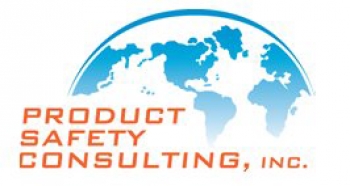So call us before you get red-tagged. If you contact us during your concept stage we can assure your success with the NRTLs. That when you can use us as red-tag erasers.
EU Construction Products Regulation
By Dan Arnold, Sales Engineer
Product Safety Consulting Inc.
We hear from numerous manufacturers currently precluded from selling in the EU because their products are not CE marked. This is especially true of construction products, which are often sold under large contracts that specify CE marking. Construction products are a good example of a well-established Directive being transitioned to a Regulation, which we covered in a previous article. Construction Products Directive 89/106/EEC (CPD) was fully replaced by Construction Products Regulation 305/2011/EU (CPR) on 1 July 2013. The CPR has several interesting differences from the more common Directives and Regulations used for electrical products.
Instead of the more familiar Declaration of Conformity (DoC), the CPR requires a Declaration of Performance (DoP). Although basic information of DoC and DoP is the same, the DoP requires a declared performance level of essential characteristics. One example characteristic is compressive strength for some structural products. The essential characteristics are an important CPR concept and are in the harmonized standards for each construction product type or family. The performance levels of essential characteristics are intuitive for construction products, which must have physical integrity to function as intended over many years. Performance to at least one essential characteristic must be declared, but to be competitive and comply with the intent of harmonized standards, multiple characteristics are likely.
Another important attribute of the CPR are the Assessment and Verification of Constancy of Performance systems (AVCP systems). The AVCP is a surveillance mechanism to ensure the declared performance of essential characteristics is maintained. Each essential characteristic specified in a harmonized standard will have one of these AVCP system numbers assigned: 1+, 1, 2+, 3 or 4, from most to least comprehensive. System 1+ requires the manufacturer to maintain Factory Production Control (FPC) and periodically test samples. It also requires a Notified Body to assess product performance, initially inspect the manufacturing plant and FPC, periodically assess the FPC, and audit test the product. Conversely, AVCP system 4 only requires the manufacturer to assess performance and maintain FPC.
CE marking can be arduous for some construction products, but the legislation and compliance scheme is well established and generally intuitive, given the critical function of these products. Product Safety Consulting can help manufacturers understand the requirements and achieve CE compliance.
References:
https://ec.europa.eu/growth/sectors/construction/product-regulation_en
The reality is that most people think that getting a product certified by UL, ETL, CSA, or another NRTL is a relatively easy task. After all, product development engineers know how to design safe products – so confirming it with testing should be a smooth process. This is a great theory, but the opportunities for test failures and non-compliances are literally endless, without knowing exactly what engineers who work for major NRTLs are looking for.
Ideally, a product should be submitted as early as possible during its development. Because we know the value added when you build solutions into products up front, we created Design For Safety Approvals – DFSA™. Bring us in at the front-end. Save your company lost time, money and customers by understanding the compliance requirements in detail before products come off the drawing board.

